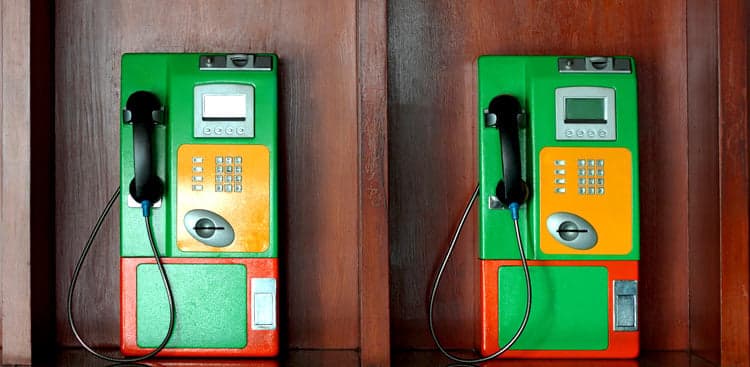We have the easiest time telling the people close to us why our company is unique, why our work is amazing, and why more people should know about all the insanely cool things we’re doing.
But when we try to formalize that in any way—developing website copy, writing a speech, or creating a company presentation—we sometimes stop being our beautiful human selves sharing funny, heartbreaking, soulful experiences and turn into BS-filled marketing robots trying to figure out the right things to say to sell our products.
If I could fly into space with a megaphone and tell everyone on the planet one thing, it’s that being human is the right way to sell your products. I’ve talked a lot about how being authentic is the most successful marketing strategy, and research backs that up: According to an article from Marketeer, personal value has two times as much impact as business value, and 68% of buyers who see a personal value will pay a higher price for service.
In the same way that people know when other people are full of it, people know when companies are full of it, too. So let your beautifully awkward, creative, complicated self—and company—shine. Here are three ways how:
1. Walk Your Talk
Your customers want to know that you’re in the trenches with them—that whatever needs your products fulfill are needs that the people running your company intimately understand.
For example, one of my favorite companies is Warby Parker. The founders’ brand story is rooted in the fact that they were young guys looking for cool-looking eyeglasses that didn’t cost a ton of money. So they built a company that answered that need for anyone who, like themselves, went to buy glasses and found them all to be too lame and too expensive. The emotional message is: “Hey, I’ve been there! I know how that feels. Let me help you.”
Now, imagine if Warby Parker was run by an old, rich guy who never wore glasses and had only launched the company to make even more money. The product can still be awesome, but the emotional connection is at .001.
2. Use Your Voice
As a writer, I can attest to how hard it is to get your speaking and thinking brain to sound like your written words (and vice versa)—but it’s incredibly important to infuse a consistent voice in everything you do.
If you’re a large company, you’ll want to figure out what your collective brand voice sounds like. What you don’t want? To be a group of enthusiastic, sarcastic, deeply creative people building a company with a website that reads like the obituary section of the New York Times. Or, worse, a group of enthusiastic, sarcastic, deeply creative people with a website that sounds like a different one of you every day. If your clients can’t paint a picture of who you are—as an entrepreneur or a company—they’re never going to be able to connect with you emotionally.
If you’re having trouble finding your voice, listen to it—literally. Download an app like iTalk on your phone and talk out whatever it is you’re trying to write. It’s awkward in the beginning, but after a few gos, you’ll find the words, cadence, and personality that will help your clients make the emotional connection you’re looking for.
3. Share Your Creepy Bits
We humans can’t relate to perfection—we may strive for it, but it’s not something that connects us. So while you want to set a high bar for yourself and the things you deliver (e.g., your documents are spell-checked, you meet deadlines, and, in general, you provide the level of service they’re expecting), you don’t want to come off as distant and unapproachable by only sharing your “look how awesome we are” stories.
Here’s what people most relate and connect to: struggle. So when that comes up in your company—like you blew a recent big speaking gig or your product failed to work at a pitch meeting—share that story, too. Brands tend to keep their creepy bits hidden because it can feel like those weaknesses will make them seem less legit, but sharing the hard times and how you overcame them is actually what will help your clients get to know you, connect with you, and ultimately, cheer you on.
Remember—yes, your clients are buying a design service or a kayak or a music lesson. But they’re also buying the feeling they hope to experience once they have it. I think the most powerful story a brand can tell their clients is this: “We’ve been where you are. It’s hard (or painful, or messy, or frustrating), but we have a solution! And you’re going to be just fine.”

